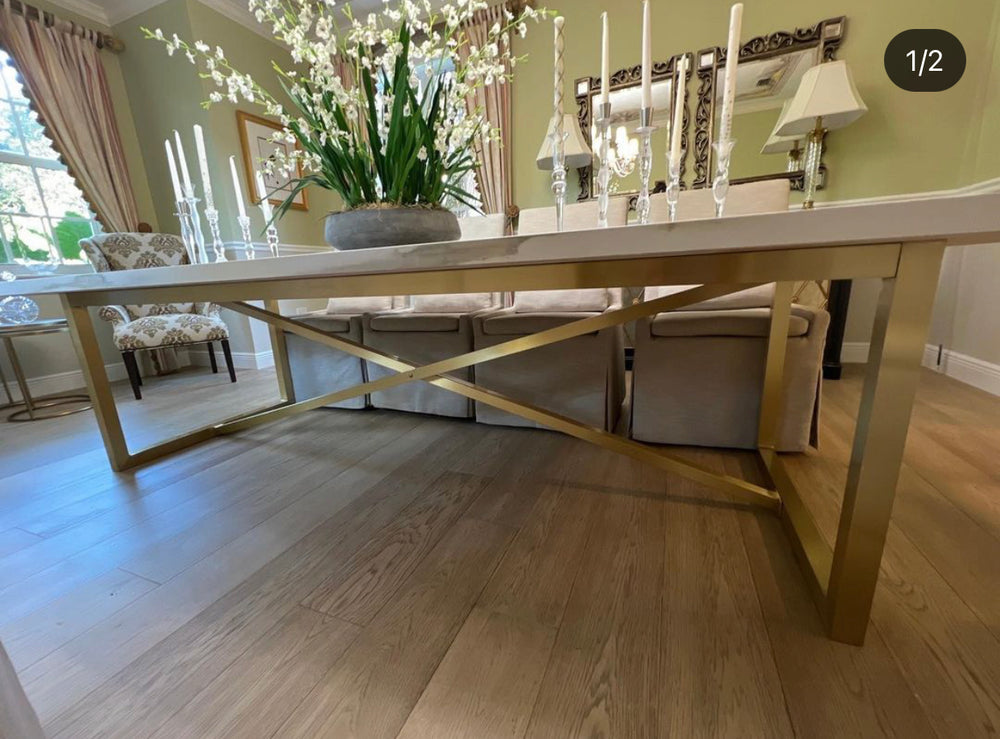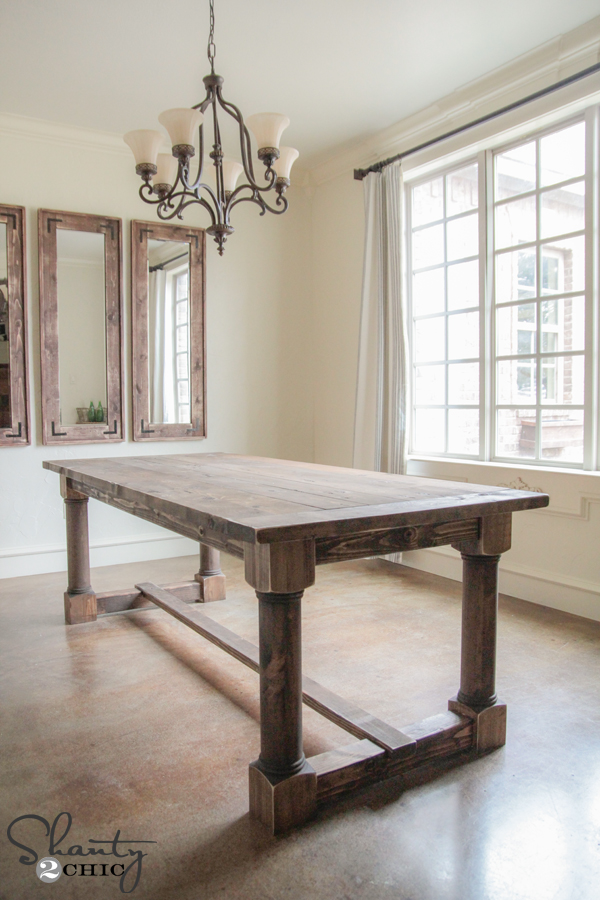Transform Your Dining Space with Stylish Dining Room Table Legs
Wiki Article
From Standard to Modern: Find the Perfect Dining-room Table Legs for Your Style
The option of dining-room table legs plays a pivotal duty in defining the general personality of your space, linking the space in between typical craftsmanship and contemporary aesthetics. While traditional layouts such as cabriole and transformed legs evoke a feeling of timeless sophistication, modern designs like barrette and geometric alternatives offer a chance for striking aesthetic interest. Reviewing the best balance in between these designs needs a nuanced understanding of your existing décor and personal preference. As you think about these elements, the concern remains: just how can you seamlessly integrate these diverse leg styles to create an unified eating experience?Comprehending Table Leg Styles
The selection of dining room table leg designs can significantly affect both the looks and capability of the space. Each leg style contributes special visual elements and functional functions, catering to varied layout choices and usage requirements. Comprehending these designs is vital for picking the right table that lines up with your general interior decoration vision.For instance, tapered legs offer a clean, timeless appearance that can enhance a room's style, while stand bases supply stability and make the most of legroom, making them optimal for smaller spaces. Hairpin legs, a hallmark of mid-century modern design, present an industrial flair, permitting an airy, open feeling. Trestle legs evoke rustic charm, offering durable support and a sense of timelessness.
Wooden legs can bring warmth and structure, whereas steel alternatives usually convey a sleek, modern vibe. Inevitably, recognizing table leg styles is essential for developing a natural eating location that shows individual style while ensuring practicality and convenience.
Conventional Table Leg Options
When picking dining room table legs, conventional alternatives commonly symbolize classic sophistication and workmanship. These designs show an abundant heritage and a commitment to high quality, making them perfect for those who appreciate classic appearances.One of the most iconic standard leg styles is the cabriole leg, defined by its stylish rounded shape. This style often features decorative carvings and is most typically discovered in Queen Anne and Chippendale furniture. An additional preferred choice is the transformed leg, which boasts a series of smooth, rounded forms that provide a traditional appearance while preserving security.
Moreover, the straight leg, while simple, provides a strong and unadorned framework that can mix seamlessly with a selection of tabletop designs. For those drawn to ornate describing, claw-and-ball feet legs evoke a feeling of splendour and can act as a sensational prime focus in any kind of dining area.
Lastly, pedestal bases, although not strictly legs, supply an alternate typical option that permits enough legroom and can be perfectly sculpted. Each of these conventional leg styles adds to the overall ambiance of a dining space, weding feature with visual charm.

Modern Table Leg Styles
Modern table leg styles provide a varied series of styles that stress tidy lines and innovative materials. These layouts typically prioritize functionality while offering as striking centerpieces within a dining area. Minimalist aesthetics prevail, with legs crafted from products such as steel, glass, and engineered timber, which add to a ventilated and contemporary feeling.One popular style is the barrette leg, identified by its slender, conical structure that offers stability without overwhelming the tabletop (dining room table legs). This design is commonly discovered in mid-century contemporary furniture and can easily complement various eating table forms. One more fad is making use of geometric forms, where legs may tackle angular or unbalanced types, adding visual interest and a touch of artistry

Mixing Styles for Distinct Areas
Commonly, house owners look for to develop unique dining areas that reflect their individual design by blending different layout components. This go to this site method permits for the consolidation of varied visual appeals, causing an unified yet distinct atmosphere. As an example, coupling a rustic wooden table with sleek, contemporary steel legs can develop a distinctive comparison that boosts the space's total appeal.Additionally, integrating vintage table legs with modern tabletops can evoke a feeling of background while keeping a modern-day perceptiveness. Such mixes not only display specific taste but also motivate imagination, enabling home owners to curate an area that really feels both individual and inviting.
Color plays a vital duty in this blending procedure; selecting table legs that match or comparison with the existing color design can boost visual passion. Whitewashed legs can soften the boldness of a dark table surface, producing a well balanced aesthetic.
Tips for Selecting the Right Legs
Choosing the right table legs is important for attaining both performance and aesthetic allure in your dining room. Begin by taking into consideration the overall style of your room. Standard settings take advantage of legs that feature detailed makings or turned styles, while contemporary spaces might require smooth, minimal styles.Following, examine the elevation and stability of the legs. dining room table legs. Common table vary between 28 to 30 inches in elevation, so guarantee the legs complement this measurement for convenience. Furthermore, robust materials, such as wood or steel, can boost stability and long life
Examine the leg form too-- choices consist of right, tapered, or pedestal designs. Straight legs offer a classic appearance, while conical legs can include a touch of elegance. Pedestal bases give ample legroom and are optimal for smaller sized spaces.
Conclusion
In summary, selecting the optimal eating area table legs needs mindful consideration of both modern and typical designs. By integrating leg design, elevation, and material with the overall design, a natural and inviting atmosphere can be accomplished.The range of dining room table leg designs can substantially affect both the appearances and performance of the area. Ultimately, comprehending table leg styles is vital for producing a cohesive eating location that shows individual design while guaranteeing usefulness and comfort.One of the most iconic standard leg designs is the cabriole leg, characterized by its elegant rounded shape. Straight legs supply a classic look, while conical legs can include a touch of helpful site sophistication.In summary, choosing the suitable dining area table legs requires careful consideration of both traditional and contemporary designs.
Report this wiki page